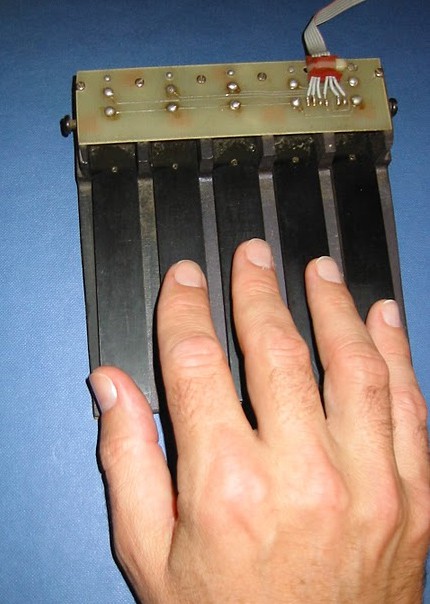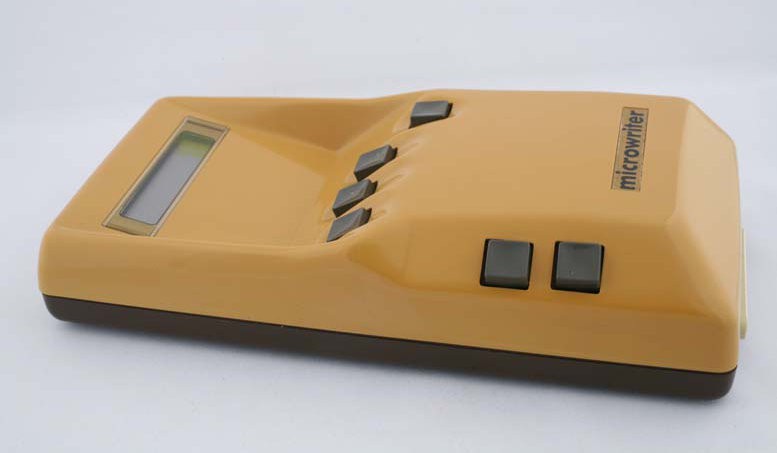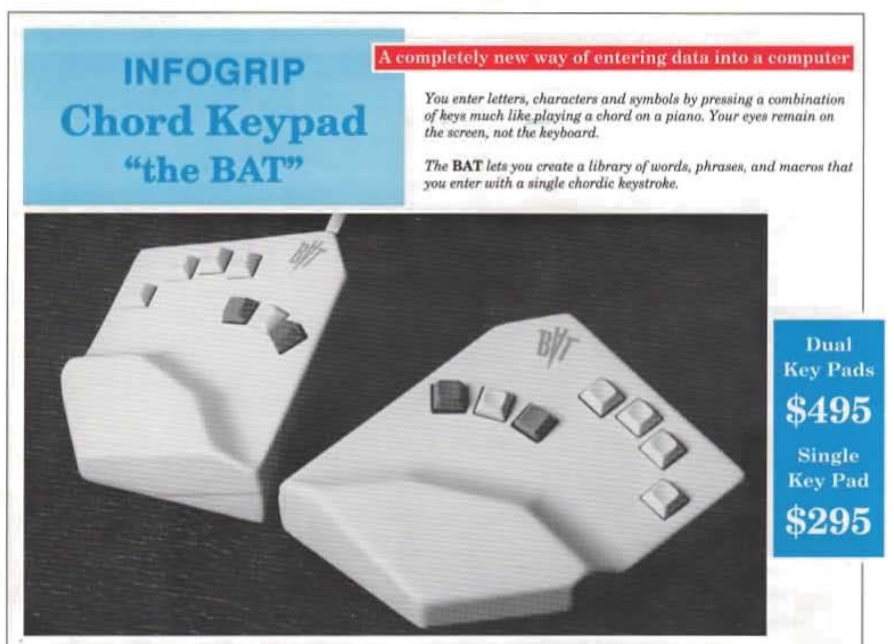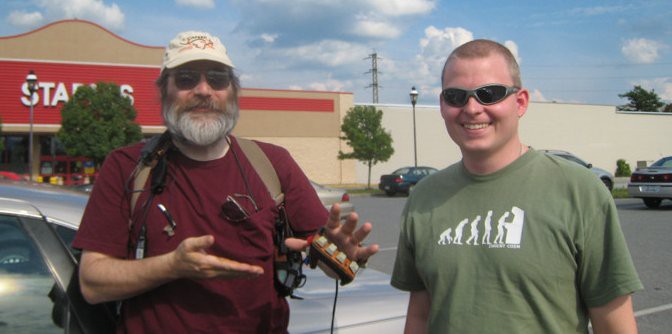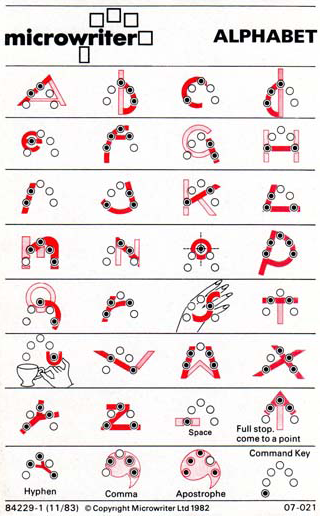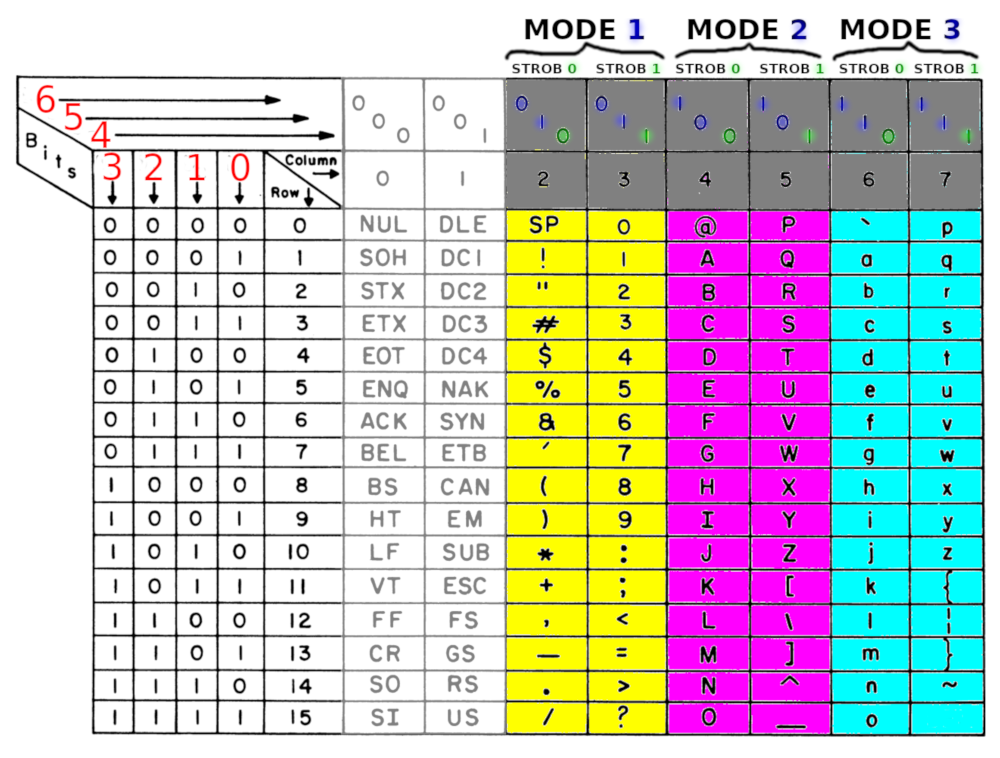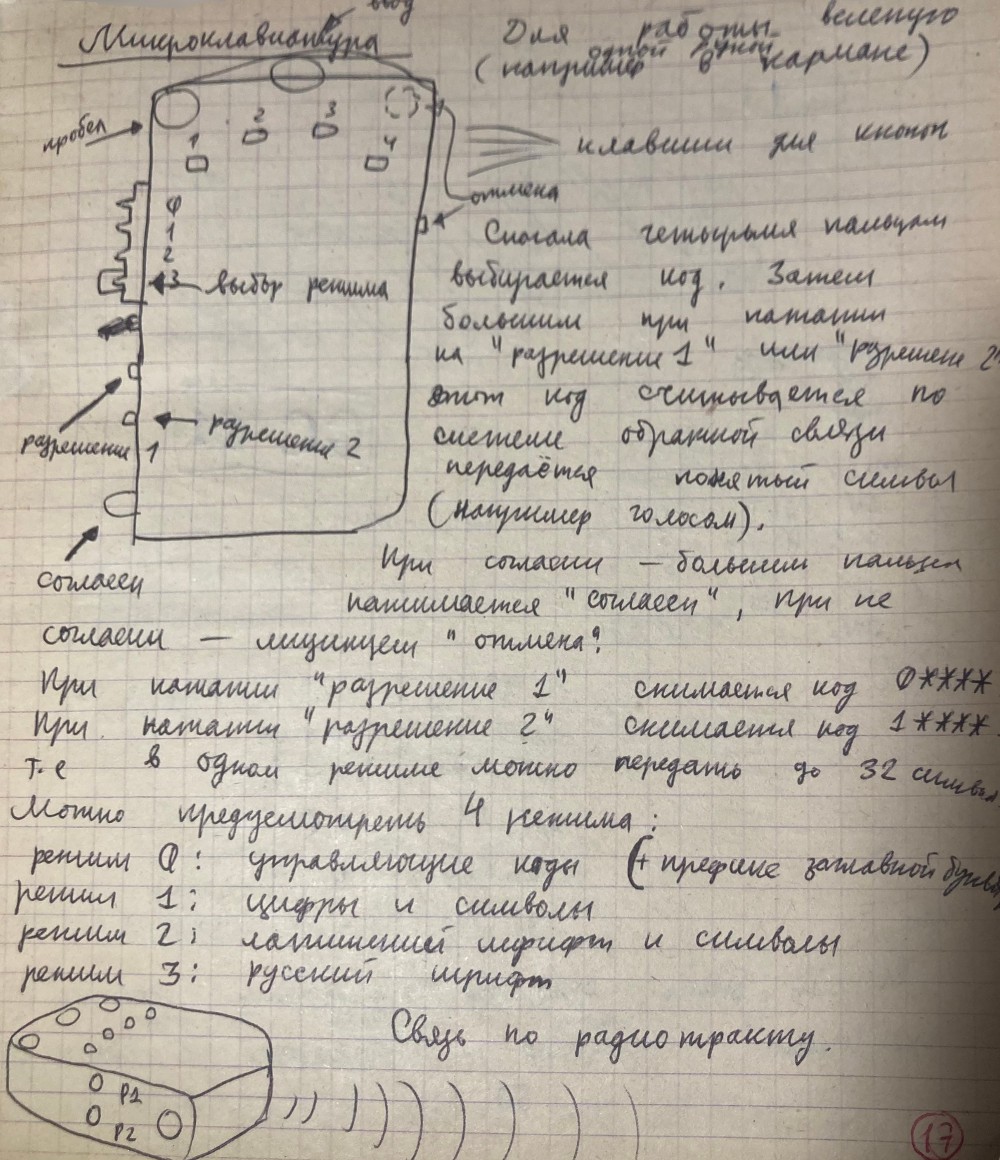-
History of chorded keyboards
05/28/2023 at 22:21 • 0 commentsOver there years I found out that this idea was very popular since 70s and there were many other examples of such "chorded" keyboards - see https://en.wikipedia.org/wiki/Chorded_keyboard
It was Xerox Alto keyset:
![]()
It was Microsoft microwriter:![]()
It was the BAT:
![]()
and most recent one is SpiffChorder:
![]()
Here in 2012 video one of the authors of SpiffChorder describes it and shows how to use it:
https://www.youtube.com/watch?v=7kATKI34jvs&t=659s (as we can see it detects combination when most keys are pressed and sends back code when all keys released - so it's constantly reading all keys to guess what user decided to enter).
Problem with all of those keyboards (as I see it) is that characters are represented by some "random" combinations of keypresses while authors tried to put some logic behind it as to resemble shape of the character for example
![]()
(these are very questionable resemblances I think) or some other reasoning as Modified NASA keybindings (used in "The BAT" and SpiffChorder).
I think working directly with ASCII is more logical especially for people who look at ASCII chart for decades and already remember most of the codes :)
![]()
And explicit existence of strobe keys in my design should simplify reading algorithm significantly....
-
Original page from my notes from April 1994
05/28/2023 at 21:30 • 0 commentsIf you understand Russian handwriting you can read original design from my notes from April 1994:
![]()
At that time it was 1 extra button "agree", but now I decided to remove it to make process of entering faster - anything wrongly entered always could be deleted by "backspace" code.
And at that time I also thought about RF way to deliver codes to computer as if it was Bluetooth already available ( it was not ; )
Somewhere around 2000 I even wrote a simulator for PC when you can use some keys of regular PC keyboard to mimic this chorded keyboard, but unfortunately I lost both sources and binaries of that program, so I'm going to write a new one...
 SHAOS
SHAOS